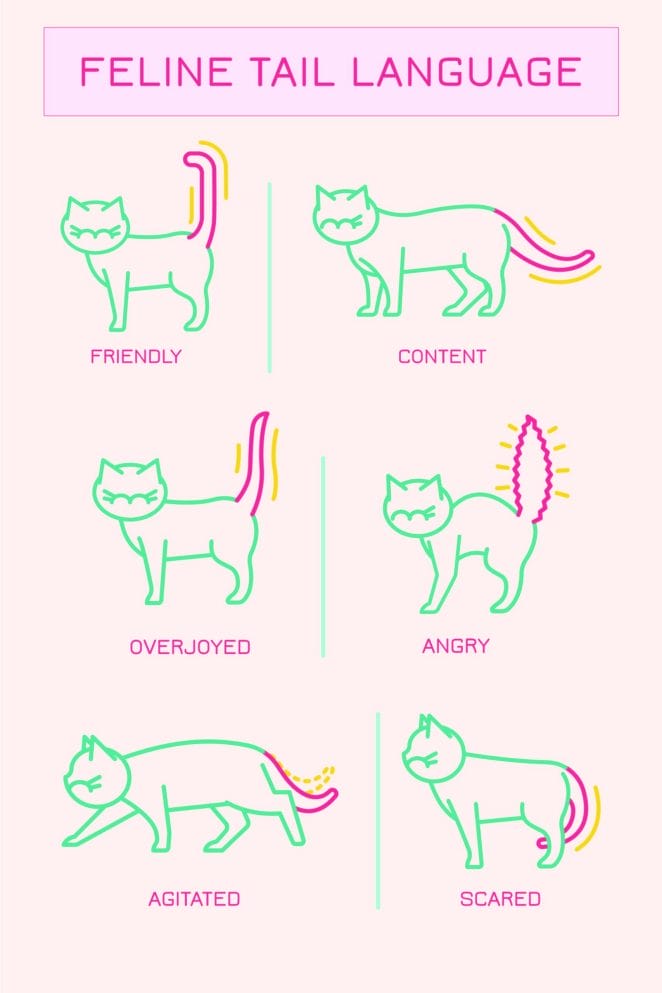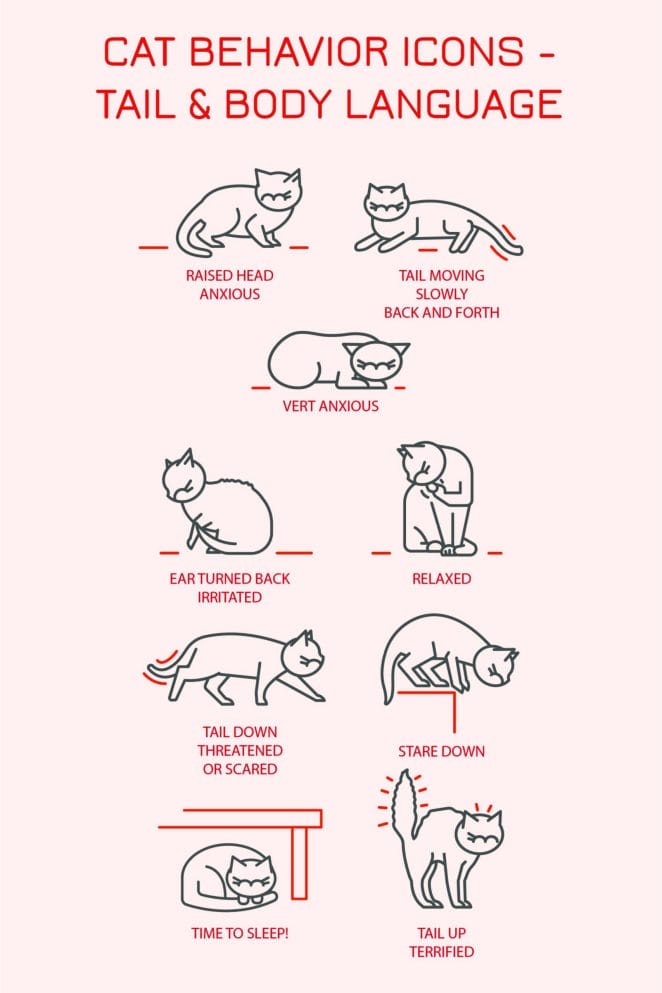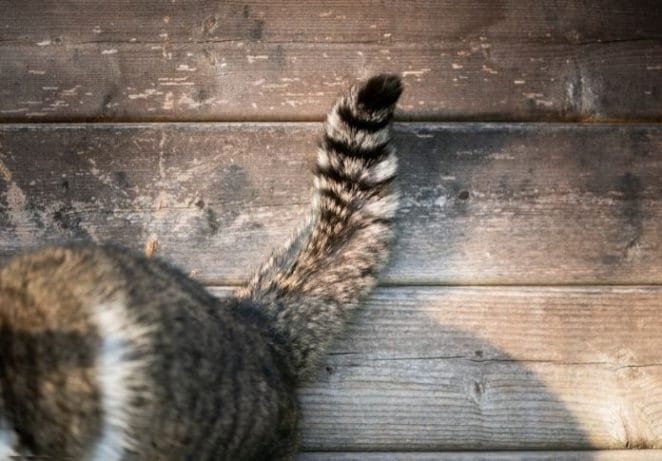Do you know what your cat is trying to tell you? According to cat experts, cats use a wide range of body language signals to communicate with their owners. Some of these signals are obvious, while others are more subtle.
In this blog post, we will take a look at 20 different ways that cats communicate with us through their body language. We will also provide a handy chart that outlines all of the different signals.
So whether you are new to cat ownership or just want to learn more about your feline friend, keep reading!

While cats seem to be mysterious to some, to others, understanding a cat is as simple as paying attention, watching the cat’s body language, and responding appropriately. Cats show a variety of ways to communicate their emotions, needs, and desires.
How Cats Use Their Tails
The position of a cat’s tail can give you a good indication of how the animal is feeling. Marilyn Krieger, a Certified Cat Behavior Consultant and Cat Fancy’s behaviorist with over 15 years of experience working with cats, explains what various tail positions signify in cat behavior.

1. Tail up – It means that the cat is happy, cheerful, and most likely approachable.
2. Tail down – What does it mean when cats walk with tails down? This might be a sign that your cat is threatened or scared.
3. Tail moving rapidly back and forth – A cat’s wagging tail is not the same as a dog’s cheerful wag. A quick-thumping tail indicates that a cat is distressed and should be left alone.
4. Tail moving slowly back and forth – When a cat is attempting to figure out what’s going on, it may move its tail back and forth slowly while making up its mind about how it feels.
5. Halloween-cat tail –Yes, cats with Halloween cat tails are frightening! According to Krieger, this posture is not a good one for a cat and it is attempting to make itself appear larger and more dangerous than it is.
How Cats Use Their Ears
Pay attention to the positioning of your cat’s ears to get a sense of how they’re feeling. The Humane Society of the United States offers guidelines for interpreting your cat’s ear positions.

6. Ears forward – A cat with its ears slightly forward is most likely happy or playful.
7. Ears straight up – When a cat is vigilant, its ears are likely standing at attention as well.
8. Ears turned back – Keep an eye on this kitty! Because the cat may be irritated when its ears slowly move back. It’s probably a good idea to leave it alone.
9. Ears turned sideways – This cat is on edge or worried about something. A cat whose ears are in this position should be treated with caution.
10. Ears back and flat against head – This is a sure indication that a cat is scared and defensive. An angry or aggressive cat may flatten its ears against her head as well. Either way, ears against the head means don’t mess with this cat!
How Cats Use Their Eyes
A cat’s eyes are not only attractive and fascinating, but they can also reveal a lot about the feline’s feelings about its surroundings.

11. Dilated pupils – According to cat behaviorist Pam Johnson-Bennett, when a cat is startled, frightened, or stimulated, its pupils may dilate.
12. Constricted pupils – Constricted pupils might mean your cat is tense or possibly feeling aggressive.
13. Stare – According to pet expert and author of the Cat Bible, Tracie Hotchner, a stare-down is most likely a challenge for your cat.
14. Slow Blinking – Slow blinking, on the other hand, is the opposite of a stare. This shows that your cat feels secure, comfortable, and trusts you. It’s definitely a sign that your cat loves you.
15. Half Closed – It means your cat is about to sleep! Hotchner says that droopy lids indicate a relaxed and trusting kitty.
How Cats Use Their Heads

16. Head stretched forward – This is a gesture of friendliness. This is done to encourage their owner or other cats to touch them.
17. Head held to the side – When a cat is defensive, it usually crouches and holds its head at an angle. When it appears irritated and furious, you can observe their ears pointing back.
18. Raised head – A defensively aggressive inferior cat will keep its head raised, but this is done to show power. A submissive cat, on the other hand, may lower its head and express aggression.
19. Head rub – A head rub between cats is a sign of friendship. This gesture is an opportunity for social bonding for two cats who haven’t previously met.
20. Sniffing – Interestingly, nose touching and sniffing are some of the ways through which a cat tries to determine the identity of another cat.

A cat’s body language might be used to communicate a variety of emotions. Take the time to figure out your cat’s numerous forms of communication and you’ll be better able to read his feelings and requirements.
However, reading your cat’s body language isn’t just a good method to understand your feline companion; it’s also crucial to be aware of its surroundings.


GIPHY App Key not set. Please check settings